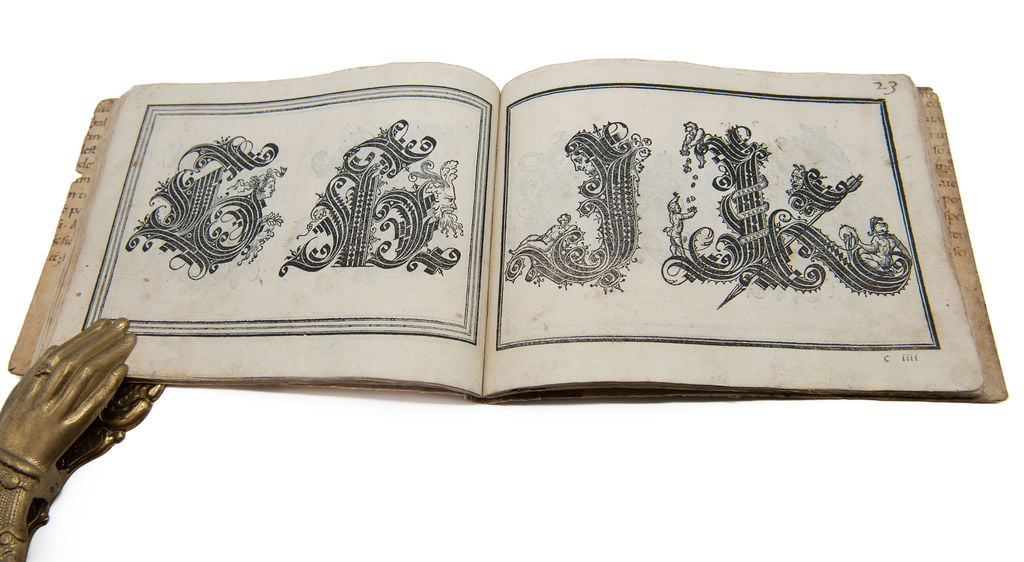AMPHIAREO, Vespasiano.
RARE AND IMPORTANT WRITING MANUAL
Opera...nella quale si insegna a scrivere varie sorti de lettere.
Venice, G. Giolito, 1554.£7,250.00
Oblong 8vo. ff. [4], 43, [1]. Roman letter, writing samples and decorated initials, including Gothic, civilité, batârde and cancelleresca, all within typographical ruling. Some marginal finger-soiling or small ink marks or smudges throughout, light age yellowing, minor expert marginal repair to first and last few ll., at times touching typographical ruling. A remarkably well-preserved copy in contemporary carta rustica covered by a C12 ms on vellum (original text, a deed for a convent?, visible to inner folds), rubbed, traces of later ms notes to covers, tiny loss to fore-edge of upper cover, numerous C16 and C17 ms annotations and pen trials to pastedowns, first few ll. and last verso, one an ex-dono to Carlo Cesaro Parigi.
A remarkably well-preserved copy, in an early working binding, of the rare second edition of this successful Italian writing manual. Vespasiano Amphiareo (1501-63) was a Franciscan from Ferrara, who taught calligraphy for decades; a Mac OS font was named after him in 2002, a tribute to his importance in the history of typography. The preface states that the work provided easy lettering for the speedy handwriting of both chancery scribes and merchants, and that the first ed. was so popular it quickly sold out, requiring a second. The manual includes recipes and instructions to write using ‘acqua di gomma’, azurite, ground gold and cinnabar, as well as how to sharpen pens and produce an ink that will not get mould or rot in the heat. Each plate features several lines from different texts, surrounded by their alphabet, some being documents, others messages from Amphiareo himself. After the cursive and Mercantesca comes the ‘Bastarda’, a sloped form of ‘cancelleresca’, this term also having been used by Tagliente (1530) and Palatino (1544). However, ‘as [Amphiareo] claims to have been teaching writing in Venice for 30 years before the publication of his work, it is just conceivable that he was the first to apply to this form of “cancelleresca” a term which had already been employed to denote an informal form of gothic’ (Morison, p.48). A page is devoted to abbreviations in cancelleresca, and several more to astoundingly floriated Gothic scripts and decorated initials, e.g., shaped like tree trunks, and letters inscribed within squares. This copy was used and cherished by Gerardo, Bartolomeo and Teodosio Frascarolo. The second and third were Gerardo’s sons, and all are recorded in the 1630s in Tortona, Piedmont. Among the pen trials are discernible copies of documents or personal correspondence, one dated 1573, concerning Giorgio Frascarolo, as well as family property such as capon and a mare.
USTC 809186; EDIT16 72639; Berlin Cat. 2456; Bongi I, 436-37; Johnson, Catalogue of Italian writing books (1950), pp.34-6. S. Morison, Selected Essays on the History of Letter-forms in Manuscript and Print (2009), vol.I.In stock







